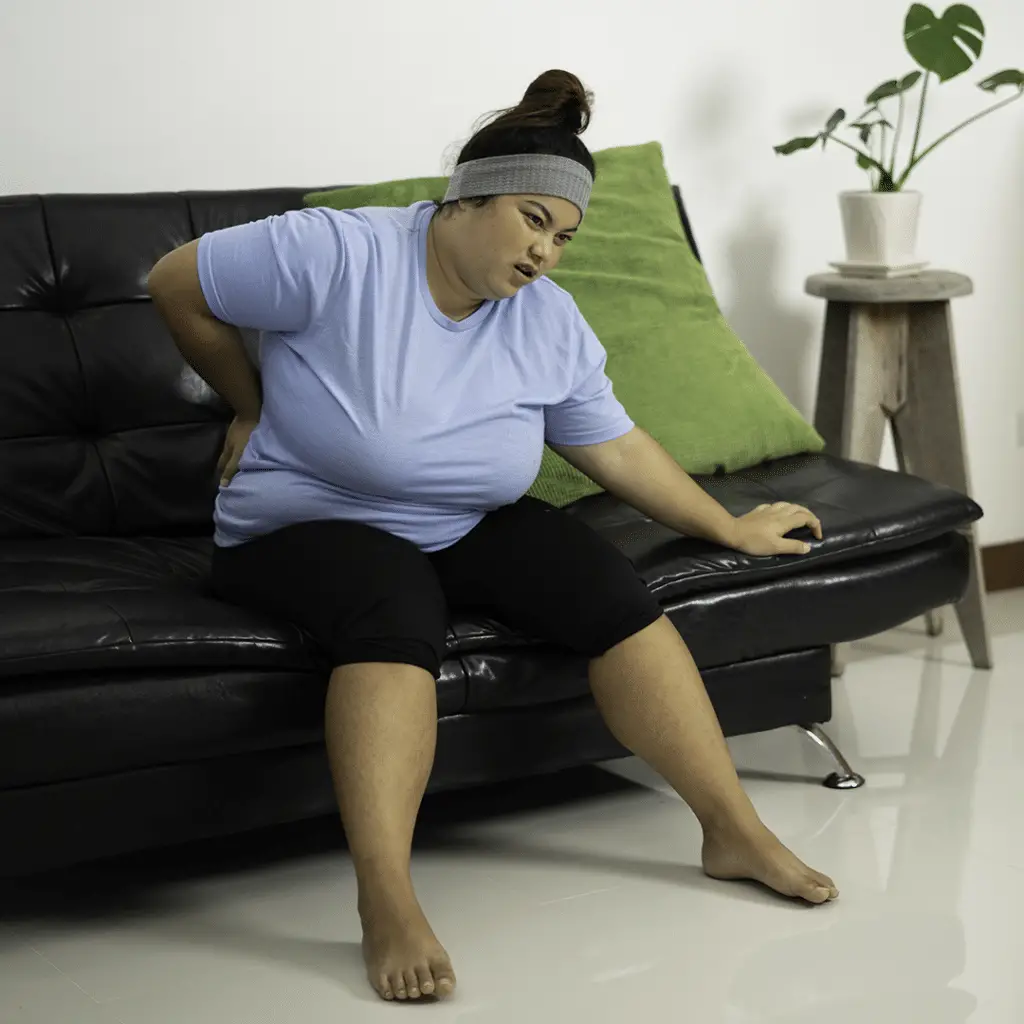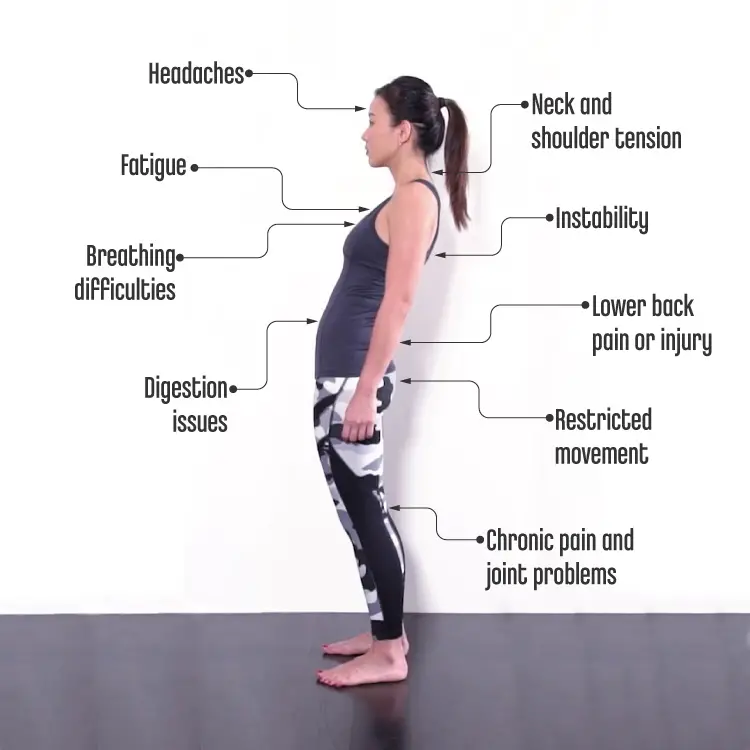Signs Your Back Pain Might Be An Emergency
In our 20s and 30s, normal back pain often can be attributed to factors of daily life, such as sitting too long, picking up children, or overdoing it while exercising.
In our 40s and older, work injuries and the beginnings of arthritis and degenerative conditions are more common.
Back pain is so common, in fact, that many patients shrug off symptoms that might indicate a medical emergency.
Approximately 80% of adults will experience back pain in their lives, so its important to be able to identify the severity of your symptoms and track how long the pain lasts.
If back pain can be associated with a specific activity, such as lifting or twisting wrong, and the pain goes away within 72 hours after resting and applying ice, its usually nothing to worry about. However, if pain creeps on gradually, appears suddenly, or doesn’t go away, you might have a more serious condition.
Lower Back Pain And Cancer
Cancer involving the lumbar spine is not a common cause of back pain. However, in people who have a prior history of cancer, for example, in the breast or prostate, or who have weight loss or loss of appetite along with back pain cancer needs to be considered.
Night pain can be a clue to cancer in the spine. A benign tumor called osteoid osteoma, which most often affects young people, causes pain that tends to respond well to aspirin. Multiple myeloma is a malignancy that occurs when the plasma cells in the bone marrow begin spreading uncontrollably. It is most common in older people, and can cause pain in many parts of the spine. When tumor or infection are suspected, blood tests may be ordered, including a CBC , sedimentation rate , and protein electrophoresis .
Rare And Unusual Causes
Rare and unusual causes of dull lower back pain may include the following.
- Abdominal aortic aneurysm : This is a life-threatening enlargement of the aorta, the main blood vessel supplying blood to the abdomen. It can cause pain throughout the abdomen or lower back. While gradual expansion may cause a dull pain, sudden leakage or rupture is associated with severe, often sharp pain, and signs of shock.
- Tumors: Cancer may originate in another part of the body and spread to the back. Chronic low back pain can be a symptom of testicular, ovarian, or colon cancer. Tumors can also be benign but otherwise affect structures of the lower back, causing pain.
This list does not constitute medical advice and may not accurately represent what you have.
Also Check: How To Treat A Herniated Disc In Lower Back
How To Get Into Bed
To get into bed safely:
Improper Posture Or Body Mechanics

Bad habits can stress your spine and strain the soft tissue surrounding it. And over time, this repeated stress can break down the structural components of the spine.
While posture or body mechanics are part of every movement you make , your work environment can have a big impact.
If your job requires regular lifting or repetitive movement, proper mechanics are your best defense against chronic back pain.
For office workers, when you sit at your desk for long stretches without stretching, it can cause your hip flexors to tighten. Over time, this can cause hips and hamstrings to weaken, leading to lower back pain.
If you notice yourself hunching over your keyboard several times per day, you may be developing kyphosis. This excessive curving of the spine is often associated with chronic back pain.
Recommended Reading: What Is Lumbar Back Pain
Age And Gender Issues
Age and gender are important factors to consider when diagnosing low back pain. In a young patient, a benign tumor of the spine called an osteoid osteoma may be the culprit. Inflammatory bowel disease in young people can be connected with spondylitis and sacroiliitis . Low back pain from disc disease or spinal degeneration is more likely to occur as people get older. Conditions such as abdominal aneurysm or multiple myeloma are also considered in older individuals.
Osteoporosis and fibromyalgia are much more common triggers of back pain in women than in men. Osteoporosis is a progressive decrease in bone density that leaves the bones brittle, porous and prone to fracture. Fibromyalgia is a chronic disorder that causes widespread musculoskeletal pain, fatigue, and multiple tender points in the neck, spine, shoulders, and hips.
Other Types Of Diagnosis
- A chiropractor will diagnose through touch, or palpation, and a visual examination. Chiropractic is known as a direct approach, with a strong focus on adjusting the spinal joints. A chiropractor may also want to see the results of imaging scans and any blood and urine tests.
- An osteopath also diagnoses through palpation and visual inspection. Osteopathy involves slow and rhythmic stretching, known as mobilization, pressure or indirect techniques, and manipulation of joints and muscles.
- A physical therapist focuses on diagnosing problems in the joints and soft tissues of the body.
Read Also: What Is A Pain Pump For The Back
What Does It Mean If Lower Back Pain Is Shooting Into Legs
Lower back pain can radiate to other parts of the body: up or down from its place of origin. Sometimes lower back pain can be on one side of the back, which is also normal.
If the pain is shooting from the lower back into one or both legs, it could be sciatica , but its not always the case. There are many parts in the lower back that may cause the pain to radiate into the legs, such as facet joints, sacroiliac joints, muscles or inflammation of the bursa.
Diagnosis Of Lower Back Pain
Your physiotherapist or GP will usually be able to diagnose lower back pain from your symptoms and by examining you. Theyll want to rule out whether theres any underlying problem that could be causing your pain.
Your physiotherapist or GP will ask you lots of questions about your back pain. These may include when it started, how bad it is and if theres anything that makes it better or worse. They may press against your back to see if theres any tenderness and check for any deformities. They might ask you to move around too, to see if you have problems bending or extending your back.
Usually, further tests wont help. But if your symptoms indicate an underlying problem, your GP may recommend tests including:
|
A year’s access to online mental wellbeing programmes provided by SilverCloud |
Don’t Miss: Can Stage 3 Kidney Disease Cause Back Pain
You’re Having Problems With Your Bowels Or Urination
If your back pain is paired with a loss of control over your bowels or urination, then it’s time to seek help immediately at a local emergency room. These symptoms point to cauda equina syndrome, where the nerves in the lower spine have become paralyzed. While rare, this syndrome can be permanently damaging to the nerves if left untreated. If you experience these symptoms, especially accompanied by numbness in the legs, then you may need surgery to decompress the nerves and preserve their overall function.
Learn More: About urinary incontinence
How Is Low Back Pain Diagnosed
Along with a complete medical history and physical exam, tests for low back pain may include:
Read Also: Can Lower Back Pain Cause Frequent Urination
Can Lower Back Pain Be Related To Weather
If you feel like your lower back pain worsens on days when its cold or the weather is changing, you are not imagining things. Back pain can indeed be related to barometric pressure and outdoor temperature. Changes in pressure can sometimes cause pain in arthritic joints, including the spine. Muscles and joints in general react to the environment, which can make them stiffer and more likely to suffer an injury.
What Are The Treatments For Lower Back Pain

Lower back pain usually gets better with rest, ice and over-the-counter pain relievers. After a few days of rest, you can start to get back to your normal activities. Staying active increases blood flow to the area and helps you heal.
Other treatments for lower back pain depend on the cause. They include:
- Medications: Your provider may recommend nonsteroidal anti-inflammatory drugs or prescription drugs to relieve pain. Other medications relax muscles and prevent back spasms.
- Physical therapy : PT can strengthen muscles so they can support your spine. PT also improves flexibility and helps you avoid another injury.
- Hands-on manipulation: Several hands-on treatments can relax tight muscles, reduce pain and improve posture and alignment. Depending on the cause of pain, you may need osteopathic manipulation or chiropractic adjustments. Massage therapy can also help with back pain relief and restore function.
- Injections: Your provider uses a needle to inject medication into the area thats causing pain. Steroid injections relieve pain and reduce inflammation.
- Surgery: Some injuries and conditions need surgical repair. There are several types of surgery for low back pain, including many minimally invasive techniques.
Read Also: How To Treat Disc Bulge In Lower Back
Its Not You Its Your Mattress
Is your lower back stiff, sore, and achy in the morning? Do your arms and legs fall asleep at night? Chances are good its time to take a look at your mattress. Changing out your mattress can make a world of difference.
Many mattresses claim to be good for 15 years or more, but researchers would argue that is too long. A 2009 study found that switching out mattresses that averaged 9.5 years old for new ones resulted in improved sleep quality and a reduction in stress-related symptoms.
You know you need to switch your lumpy old bed, but choosing a new one is a challenge. Here are three steps to getting the right mattress for you.
Referred Pain To And From The Lumbar Spine
Pain in the area of the lumbar spine may be due to important problems that are actually unrelated to the back. Referred pain occurs when a problem in one place in the body causes pain in another place. The pain travels down a nerve.. Sources of referred pain to the low back may include abdominal aneurysm , tubal pregnancy, kidney stones, pancreatitis, and colon cancer. Clues to these maladies include pain that waxes and wanes over a short period, with frequent peaks of intense pain, weight loss, abnormalities found during abdominal exam, and trace amounts of blood in the urine. On the other hand, pain can be referred from the low back and be felt in another location, as is often the case with . For example, it is not rare for a patient with a slipped disc in the lower back to have pain in the back of the thigh, or in the calf or even the foot, and not have any low back pain. This situation requires a doctor to sort out the type of pain and to do the examination required to show that the pain is actually coming from the spine .
Don’t Miss: Can A Prolapse Cause Back Pain
When To See A Specialist For Lower Back Pain
If you’re experiencing lower back pain that’s not responding to rest and self-care, it’s time to consider seeing a spine specialist.
“A spine specialist will likely perform a physical exam as well as one or more imaging scans to diagnose the root cause of your lower back pain. Depending on your diagnosis, he or she will then design a treatment plan aimed at alleviating your pain and preventing it from disrupting the everyday activities you enjoy,” says Dr. Palmer.
Next Steps:
You’re Running A Fever
The flu can definitely make you run a fever and achiness, including in your back. However, if the fever is unresponsive to standard OTC medications, you could have a serious infection that needs treatment immediately. If you go to a doctor and they find an infection, they may prescribe antibiotics and a few days rest. Learn how to avoid the flu.
Learn More:When to go to primary care, urgent care or the emergency room
Recommended Reading: What Is The Best Pillow For Neck And Back Pain
Top Causes Of Chronic Low Back Pain
Here are the top causes of low back pain and tips for prevention.
It’s hard to find any part of Elin Laird’s life that hasn’t been touched by pain. “I can’t stand for too long. I can’t sit for too long. Pretty much if I’m at home, I’m lying in bed,” says the 39-year-old single mother. “I can’t be as active in my son’s life. I can’t travel as much. I’ve lost so much of my life.”
Laird describes the pain of her herniated disc as similar to having “an ice pick shoved in the base of my spine.” It’s a pain that no therapy â from steroids to painkillers to surgery â has managed to budge. And she is far from alone in her discomfort.
“Eighty percent of the population of the United States, at some point in their life, is going to have back pain,” says Ronald J. Wisneski, MD, an orthopedic surgeon, specialist in spinal disorders and spine surgery, and associate in the Department of Orthopedic Surgery at Geisinger Medical Center in Danville, Pa. Most of the time, that pain is centered in the lower back and non-specific, meaning there is no primary cause found. About 2% to 10% of people who experience low back pain develop chronic low back pain, which affects daily living for at least 3 months.
What could be triggering your back pain? To get an idea, WebMD talked to two orthopaedic surgeons about the most common causes of chronic lower back pain — and what you can do about it.
What To Do If Youre Waking Up With Back Pain
Back pain is a common complaint for adults. About 80 percent of adults will experience lower back pain at some point in their life. More than a quarter of adults report experiencing low back pain within the last three months. Low back pain is the most common cause of job-related disability and a major contributor to missed workdays.
If youre waking up with back pain, chances are youre not getting the restorative sleep you need at night. Common causes of back pain include getting into an accident and lifting something heavy. Sometimes back pain can develop over time with age. A sedentary lifestyle can lead to low back pain, especially if you have a burst of activity your body isnt prepared for.
Most low back pain is short-term, lasting just a few days to a few weeks. Often, it resolves on its own or with a treatment of the underlying cause. However, chronic back pain persists for 12 weeks or longer. Sometimes, a medical or surgical procedure can relieve the pain, but sometimes, pain persists despite treatment.
Also Check: How To Heal Your Back Pain
How To Get Out Of Bed
To get out of bed safely:
Alternatively:
Arthritis Of The Spine

Arthritis of the spine the slow degeneration of the spinal joints is the most frequent cause of lower back pain. All of us experience wear and tear as we age, and it is normal for your lower back to start acting up as you get older. As the cartilage breaks down between the spinal joints, surrounding tissues may become inflamed. The inflammation and the thinning of cartilage increase friction in the joints, which may cause pain in the lower back.
Read Also: Why Do I Have Lower Back Pain On My Period
Take It Slow When Getting Up
Taking it slow when you get out of bed can be beneficial. You may want to use your arms to sit up slowly before moving your legs off the side of the bed. Once you plant your feet on the ground, shoulder-width apart, you can stand up slowly, using your leg strength instead of your back to help you up.
After carefully standing, you can further relieve tension by reaching your arms up above your head and stretching slowly from side to side.
Seeking Help For Lower Back Pain
You may not need to seek help from a health professional for lower back pain. Most people find their lower back pain improves by itself within a few weeks. But if there’s no improvement after two to three weeks or the pain is getting worse, seek advice from a GP or physiotherapist. It’s also worth seeking help if your back pain is stopping you from doing normal activities, or if it goes on longer than six weeks.
Physiotherapists are often best placed to help with back pain. In some areas, you may be able to self-refer to a physiotherapist on the NHS, whereas in others you need a referral through your GP. You can also choose to pay for private physiotherapy.
There are some circumstances when you should always see a doctor straightaway for back pain though. These include if:
- you have numbness or tingling around your bottom or genitals
- you cant control your bladder or bowels
- youre unsteady when you walk, or your legs or feet feel weak, you have sudden, severe lower back pain
- youve been in a major accident, such as a traffic collision or fall
- you have osteoporosis
- theres a visible deformity in your back
- the pain continues when youre lying down or overnight, disturbing your sleep
- you have a history of cancer or have had a recent bacterial infection
- you also have a fever, chills or unexplained weight loss
These can be signs of more serious problems.
Also Check: What Exercises Can I Do For Lower Back Pain